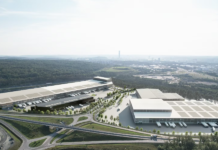
HMM closed the first half of 2025 with solid profits, despite weaker freight rates and global trade challenges.
Revenue for H1 reached KRW 5,477 billion, up 9.7% year-on-year. Net profit rose 5.7% to KRW 1,211 billion. Operating profit came in at KRW 847 billion, delivering a 15.5% margin.
In Q2, however, results softened. Revenue slipped 1.5% to KRW 2,623 billion. Operating profit dropped 63.8% to KRW 233 billion, while net profit fell 28.7% to KRW 471 billion.
Freight rates remained under pressure. The Shanghai Containerized Freight Index (SCFI) averaged 1,701 points in H1, down 27% from last year, as U.S. tariffs and trade tensions weighed on demand.
HMM expects market volatility to persist with the expiry of tariff grace periods and ongoing renegotiations. The company plans to counter this with flexible fleet deployment, stable long-term contracts, and cost savings from more efficient vessels.
Under its 2030 strategy, HMM is expanding its fleet. Two of nine methanol-powered 9,000 TEU containerships have already been delivered. The rest will arrive by mid-2026. In the bulk segment, seven PCTCs ordered in 2023 will be delivered starting September 2025, alongside four MPVs and two MR chemical tankers.
The company says it will continue diversifying its fleet to strengthen resilience in a shifting global trade environment.





